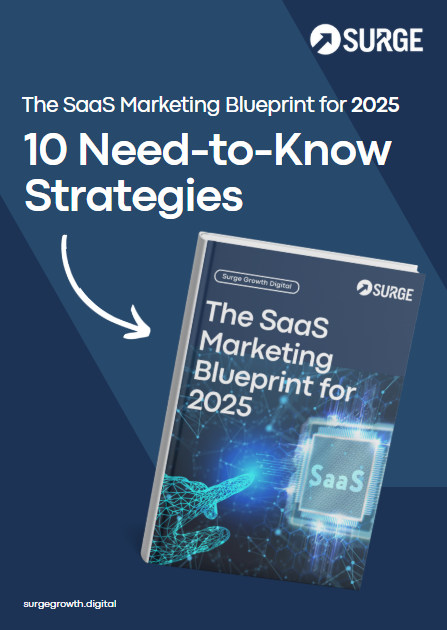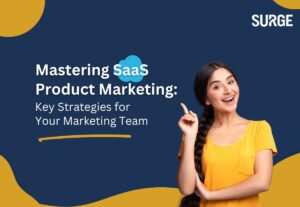
Introduction
Software as a Service (SaaS) is adapting at an ever-growing speed. In 2025, the integration of artificial intelligence (AI), shifting buyer expectations, and increasing competition demand a more intelligent, adaptable, and human-centric marketing approach. Traditional playbooks are no longer effective.
This blueprint outlines ten essential strategies to help SaaS companies generate demand, nurture leads, convert users, and grow sustainably. Whether you’re a scaling startup or an established provider, these insights are designed to help you outmanoeuvre the competition and build meaningful customer relationships.
1. Define and Continuously Refine Your Ideal Customer Profile (ICP)
Success begins with a clear understanding of who your customer is. Rather than relying on generic audience segments, SaaS marketers must focus on creating specific, data-informed profiles that reflect real customer needs and behaviours.
This means speaking directly with your most successful customers, analysing behavioural data from within your platform, and building detailed personas that include motivations, goals, and common obstacles. The more precisely you define your ICP, the more effectively you can tailor your marketing, sales, and product development efforts.
2. Embrace Product-Led Growth as a Core Strategy
In 2025, product-led growth (PLG) is no longer optional – it’s a proven growth engine for SaaS businesses. The concept centres around allowing the product to drive acquisition, conversion, and retention.
Offer a seamless free trial or freemium experience that enables users to engage with real value quickly. Guide them with contextual in-app prompts, tutorials, and onboarding sequences that lead them to key outcomes. Self-service upgrades, referrals, and in-product messaging should be integral to your go-to-market model. When done well, your product becomes your most powerful marketing and sales asset.
3. Structure Your SEO with Topic Clusters (and Optimise for AI Mode & AI Overview)
Search engine optimisation remains vital in 2025, but the approach has evolved. It’s no longer just about targeting keywords — it’s about building topic authority and ensuring your content is discoverable across both traditional search results and new AI-driven experiences.
Instead of publishing standalone posts, SaaS companies should focus on content clusters that showcase expertise. Create comprehensive pillar pages supported by focused subtopics, all internally linked to strengthen topical relevance. This structure not only signals authority to search engines but also improves the chances of being featured in AI Overview results.
With the rise of AI Mode, content that is well-structured, context-rich, and authoritative is more likely to be surfaced by AI-generated answers. Leveraging AI-assisted writing tools can also help you scale production while maintaining the depth and quality needed to stand out in this new search landscape.
4. Deliver Personalised Experiences Across Every Channel
Today’s buyers expect relevant experiences at every touchpoint. One-size-fits-all content no longer resonates, particularly in a B2B SaaS context.
Tailor your email campaigns based on the user’s role, industry, or behaviour within your product. Make use of intent data to dynamically adapt your website content and calls to action. Even paid media should reflect the stage of the customer journey, whether someone is just becoming aware of your product or already comparing solutions. In 2025, personalisation isn’t a tactic, it’s a standard.
5. Use Social Media to Build Authority and Connection

6. Create an Onboarding Experience That Accelerates Value
7. Make Customer Success a Proactive Growth Driver
8. Use Account-Based Marketing to Win High-Value Deals
9. Focus on Metrics That Drive Strategic Decisions
With countless dashboards and metrics available, it’s easy to lose focus. The most successful SaaS marketers in 2025 track only what truly reflects performance and potential.
Instead of vanity metrics like impressions or clicks, pay attention to leading indicators such as product-qualified leads, conversion from trial to paid, and customer lifetime value. Understand your CAC: LTV ratio and monitor churn closely. Metrics should inform experimentation and drive informed decision-making at every level.
10. Stay Adaptable While Remaining Human
Revisit your messaging and customer personas regularly. Test new channels, formats, and campaign structures without losing sight of what your audience values most. Maintain a tone of voice that reflects your brand’s personality, speaks with empathy, and prioritises clarity. The most impactful marketing in 2025 will balance innovation with genuine connection.






